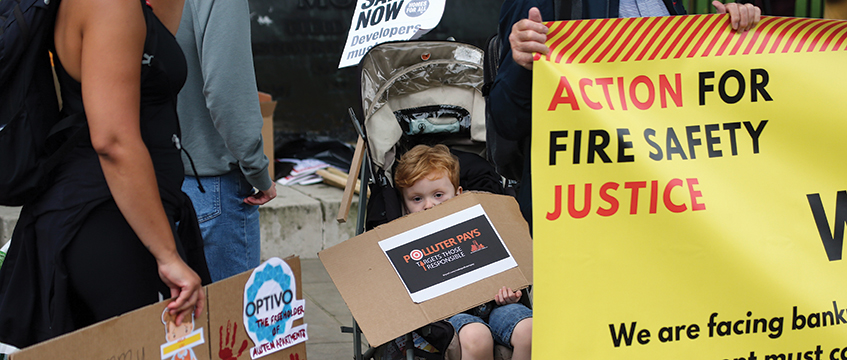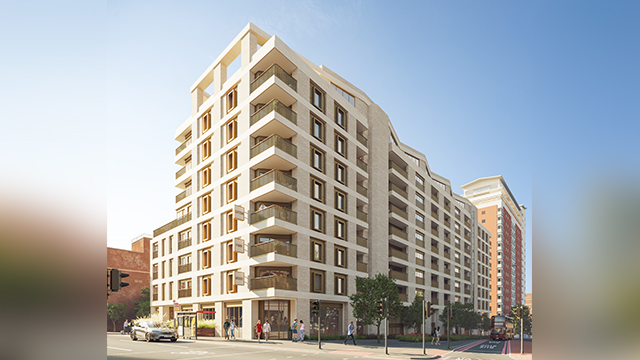France’s listed property sector is growing rapidly following the introduction of SIIC regime
When it comes to REITs in Europe, France is leading the way. The SIIC regime, introduced in 2003, has helped unlock latent growth in the French market and improve transparency, liberating investors from having to take complicated routes to secure tax breaks on their investments.
Since their arrival, SIICs have put down firm roots in France’s quoted sector and become a dominant investment method for the country’s listed companies. By the end of 2006, 43 of the 58 listed property companies will be SIICs. These vehicles will have a market capitalisation of around €50bn – more than the real market capitalisation of the whole French listed sector in 2003.
In three years the SIIC regime has already proved its worth, not just to investors who have taken the plunge, but to the French investment market as a whole. James Raynor, a director at Grosvenor Fund Management, says: “There is a huge amount of investor interest and not enough product to satisfy that interest – SIICs have created a larger investment market with greater liquidity.”
Emmanuel Fatôme, partner at law firm De Pardieu Brocas Maffei, agrees: “The number of players in the French market has enlarged because of the SIIC regime.” Companies are being pushed into becoming SIICs by the strong and continuing flow of funds toward property securities. SIICs have given investors a chance to overcome the lack of product in the French market.
“In the past six months there has been an acceleration in the market and now everyone wants to have a SIIC,” says Robert Waterland, managing director of Société de la Tour Eiffel.
Recent entrants to the listed sector include Dolmea Real Estate, France’s first residential SIIC; Paref, a French property investment and management company; Cegereal, CGI’s French subsidiary; Vectrane; Icade; Société Foncière Paris Ille de France; and Celeos Groupe.
Non-French funds prepare to list
“The sector is still growing rapidly,” says Stéphane Illouz of De Pardieu Brocas Maffei. “Non-French investment funds are preparing to list. These opportunistic funds are coming to the conclusion that the SIIC is the best way for them to purchase in France. The sector is growing through more diversified companies, investors and funds.”
French companies that converted to SIIC status have had a turnaround in fortunes, largely because the structure has helped improve their values. Since 1990, shares of French listed companies have traded at a 26% average discount to net asset value, according to Cohen & Streers. Now, most of the major listed companies, such as Klépierre, SFL and Unibail, are trading at premiums to NAV.
The regime is continually being modified as the industry learns what does and doesn’t work. Changes to SIIC legislation in January this year are expected to stimulate further growth. The changes, known as SIIC3, will allow vendors to cut their capital gains tax liability from 33% to 16% when they sell to a SIIC, or any other company open to public investment.
The previous SIIC2 system allowed companies to benefit from lower capital gains in return for buying shares. “It was soon realised that economically this didn’t make sense apart from in very big deals,” says Waterland. “The French don’t like selling real estate at the best of times, and they certainly don’t like doing it for shares.”
Such a change has inspired non-property companies and the government to free up their property and sell it to investors.
Illouz has seen evidence that these changes have had wide appeal: “This system motivates companies to elect to join the SIIC regime – and this applies to non-property companies, too. I have been asked by at least two industrial companies with portfolios of real estate assets whether they can set up a SIIC. That way they can purchase more assets and put them in the same vehicle.”
This window of opportunity for spinning off property into SIICs will only be open until 2007, however, as the government wants to encourage people to get on with releasing their property to the market.
“The changes will facilitate a lot of property outsourcing – many French companies own the buildings they occupy, which isn’t so much the case in the UK,” says Alexandre Lagarrigue, a partner at law firm Clifford Chance. “They were put off selling before because of the huge capital gains accrued on assets. Now they are able to sell assets for cash and invest it back into the business.”
Competitive advantage
This added flexibility has also given SIICs a competitive advantage when competing for property against non-SIICs; they can effectively bid less against a non-SIIC but still win, on account of the capital gains tax relief a vendor would get.
While this is clearly beneficial for SIICs, some argue it is unfair. “It’s no longer a level playing field between SIICs and non-SIICs,” says Stephen Miles, investment director at Jones Lang LaSalle. “SIICs have an unfair advantage in the market because non-SIICs are now finding that they have to price in the ‘SIIC effect’ – they know they need to pay more.”
The tax breaks offered under SIIC3 are such that in some cases, a bid will not even be open to non-SIICs. Even if it is, it will not be worth a non-SIIC attempting a bid. “Some deals now are only open to listed companies,” confirms Paul Joubert, head of transactions at Invesco. “Non-SIICs know very well it makes such a difference not being listed that it’s not worth them bidding.”
Joubert adds: “The competition is a bit different now. We have looked at buying listed companies because we know we need that kind of vehicle if we want to stay competitive. The state may change its mind with regard to the tax advantages because maybe the government have shot themselves in the foot, because when it comes to them wanting to buy property, the government will face the same problem.”
But Alec Emmott, managing director of Société Foncière Lyonnaise, disagrees. “Property companies used to be at a disadvantage against many offshore funds,” he says. “All this has done is levelled the playing field again. It’s given an inducement to onshore, transparent property ownership. For a long time the biggest players were the German open-ended funds.
“It is also inducing a lot of people to think about setting up their own SIICs and thisis clearly a movement that has blossomed over the past six months,” Emmott adds.
Rules applying to SIIC subsidiaries have also been altered to improve flexibility. Under the old legislation, a subsidiary had to be 95% owned to fall within the SIIC regulations. The new legislation stipulates that 50% ownership or management and control is sufficient to include the subsidiary in the tax-free bracket.
This change has benefited companies such as Foncière des Régions, which previously had to pay tax on dividends distributed by its subsidiaries such as Bail Investissement and Foncière des Murs, but now receives dividends tax free.
But some have reservations about the way in which the regime is evolving. The recent takeover of some French SIICs by Spanish property companies is a growing phenomenon. In June, Spanish company Realia acquired SIIC de Paris for €586m. This will add to an existing list of French SIICs that are effectively controlled by big Spanish institutions.
If Spanish property developer Inmocaral’s takeover bid for Catalan rival Colonial is successful, it may buy the remaining 20.5% of Société Foncière Lyonnaise not owned by Colonial. Metrovacesa’s 70% share of Gecina is another high-profile example of Spanish companies controlling SIICs.
A lack of retail investors
These acquisitions have underlined the fact that “the French quoted sector suffers from a lack of retail investors”, according to Philippe Tannenbaum, director of investment banking research at Eurohypo. “Look at Unibail, which is 30% in the hands of US and Asian institutional investors. As soon as there is a risk in those markets, those investors will sell.”
A SIIC is required by law to have 25% of shares in free float, but this portion is often instantly snapped up by institutional investors.
“Retail investors are traditionally less volatile. It is good for a company to have one or two big names so they can raise money more easily, but it is better to have these alongside retail investors,” he adds.
“The idea of SIICs was that they could compete with other REITs worldwide and offer a good pension plan product,” says Société de la Tour Eiffel’s Waterland. “The private equity players couldn’t care less about that idea and are using SIICs exclusively to get tax breaks. I’m not trying to be some kind of great socialist pioneer, but that wasn’t the idea in the first place.”
“The Spaniards having been winding the market up on the back of the fiscal advantages they are getting,” he adds.
Spanish companies are benefiting from lower taxes not only through SIICs, but also by securing most of their debt in Spain. Because their earnings are lower in Spain, their tax liabilities on earnings are reduced.
Despite concerns from some in the industry, French policy makers aren’t getting involved. When Senator Philippe Marini, finance commissioner to the French Senate, was recently quizzed on whether he believed SIICs were being hijacked by private equity investors looking for tax breaks, he replied: “Once you start trying to regulate things, you distort the market, and for once we’re ahead of England.”
|
French SIICs |
||
|
The sector’s growth has accelerated in the past six months with seven more companies listing as SIICs |
||
|
Company name |
Market cap €m* |
Activities |
|
Acanthe Development |
311 |
Offices and commercial premises in Paris’s central business district |
|
AD Capital SIIC |
26 |
Financial services, management of properties, mainly in Paris and its suburbs, leisure services such as management of ski-lifts and hotels in the Mont-Blanc area (Sameon, Morillon and Flaine) |
|
ADT-Nouvelle des Etablissements |
54 |
Invests in offices in France and Brussels |
|
Affine |
140 |
Invests in offices, warehouses and retail |
|
Altarea |
357 |
Invests in shopping arcades and develops shopping centres |
|
ANF |
65 |
Invests in offices, residential and car parks in Lyon and Marseilles |
|
Bail Investissement Fonciere |
1,600 |
Logistics and retail in the provinces |
|
Cegereal |
400 |
Paris office property |
|
Celeos |
123 |
Regional property developer |
|
Corio |
3,100 |
Retail and shopping centres |
|
CBO Territoria |
74.7 |
Land management, property development and property management |
|
Docks Lyonnais |
57.18 |
Investment and management of property and land. Portfolio comprises residential properties, offices, business premises, warehouses and Les Palatines hotel. All subsidiaries in Lyon |
|
Dolmea ** |
Not known |
High yielding residential property |
|
Icade EMGP |
670 |
Invests in offices and industrial property in Paris and the Paris region |
|
Icade |
2,700 |
Invests in offices, retail and leisure |
|
Eurocommercial |
1,000 |
Shopping centres |
|
Societe de La Tour Eiffel |
481 |
Offices, industrial and warehouses, mainly in the provinces |
|
Fonciere Atland |
7 |
Development of offices, commercial space and residential in Brittany and Paris |
|
Fonciere des Murs |
485 |
Hotels, retirement homes and leisure in Paris and provinces |
|
Icade Fonciere des Pimonts |
348 |
Offices and retail in Paris and provinces |
|
Fonciere des Regions |
365 |
Invests in offices, retail, car parks, residential and retirement homes in Paris and the provinces |
|
FDL |
309 |
Residential property company |
|
Fonciere Massena |
30 |
Shopping centres across France |
|
Gecina |
5,700 |
Offices, commercial premises and residential, mainly in Paris and the Paris suburbs, with some assets in Lyon |
|
Hammerson |
4,560 |
Offices and retail |
|
Klepierre |
4,000 |
Offices and shopping centres |
|
Lucia |
167 |
Offices, mainly in La Defense, and holiday villages |
|
Mercialys |
606.68 |
Owns and manages shopping centres and self-service restaurants adjacent to Groupe Casino hypermarkets or supermarkets |
|
Mines de le Lucette |
1,000 |
Offices, warehouse, hotels and residential |
|
PAREF |
50 |
Property investment and management for third parties |
|
Rodamco |
6,500 |
Retail, but also invests in offices and industrial |
|
SILIC |
1,400 |
Offices and industrial with some retail, almost exclusively in the Paris region |
|
Societe Fonciere Paris Ille de France |
43 |
Offices |
|
Societe Fonciere Lyonnaise |
2,000 |
Offices in Paris and the Paris region |
|
SIIC de Paris |
574 |
Offices in Paris and Ile-de-France |
|
SIIC de Paris 8eme |
97 |
Paris offices |
|
Unibail |
6,000 |
Offices and shopping centres, mainly in Paris and western central business district |
|
Vastned Retail |
1,000 |
Retail |
|
Vectrane |
220 |
Offices and leisure |
|
Warehouse de Pauw |
350 |
Tailor-made warehouses, storage and distribution buildings |
|
Wereldhave |
1,000 |
Offices and retail |
|
Zueblin Immobiliere France |
50 |
Offices, retail and logistics |
|
Source:EPRA, Euronext and Global Property Research. Includes SIICs that are listing this year *After free-float correction **Listing soon |
||










